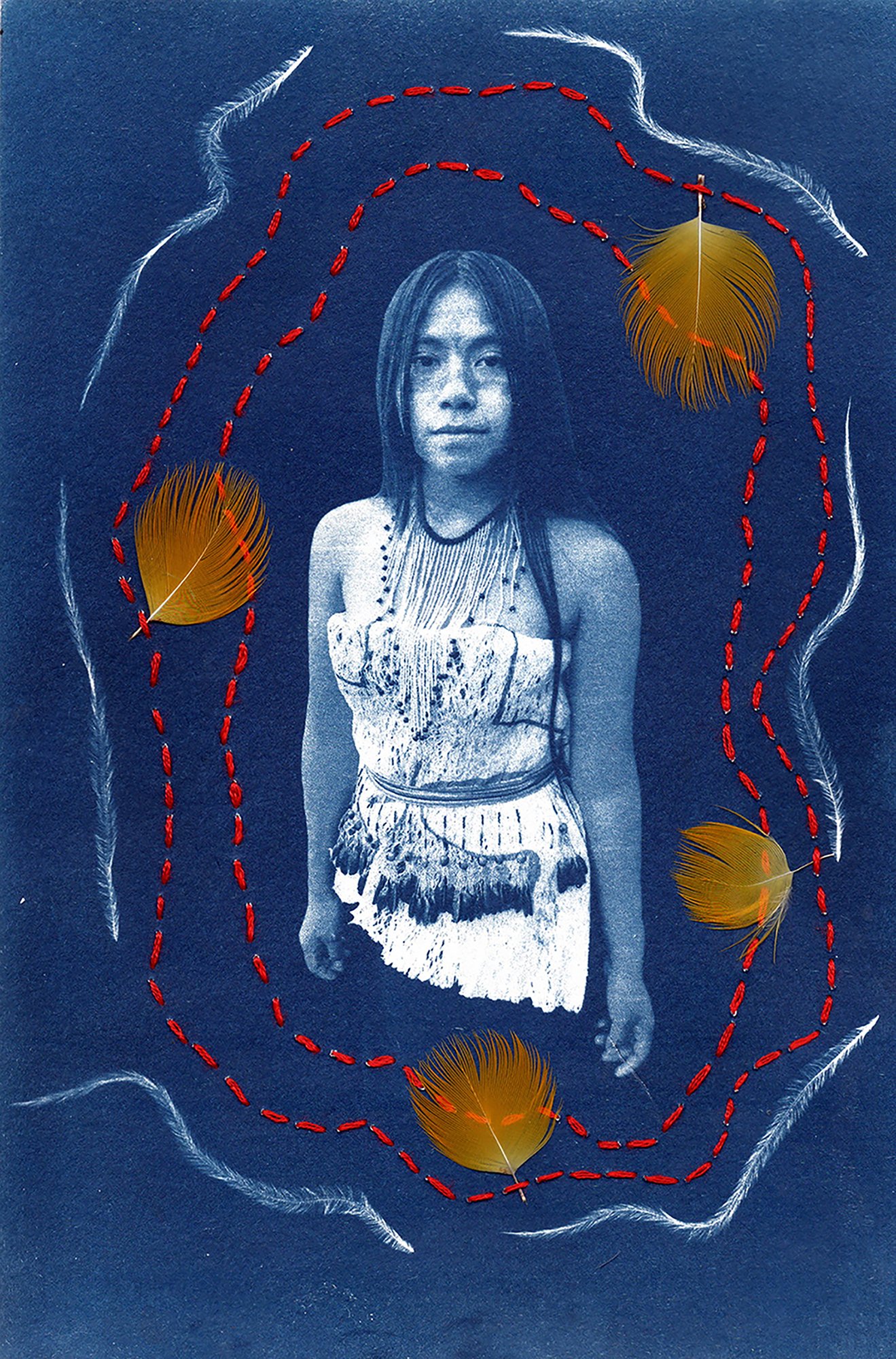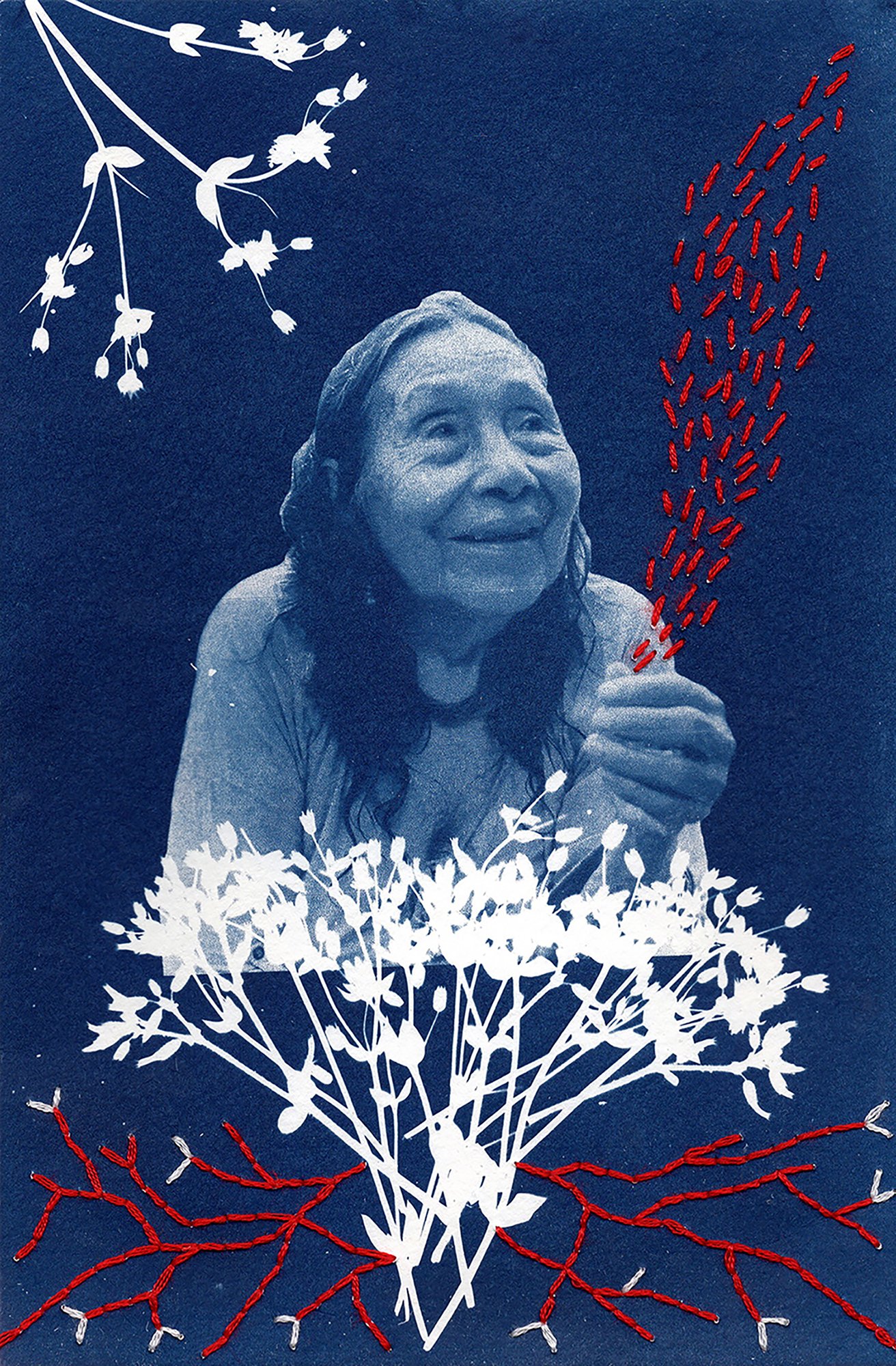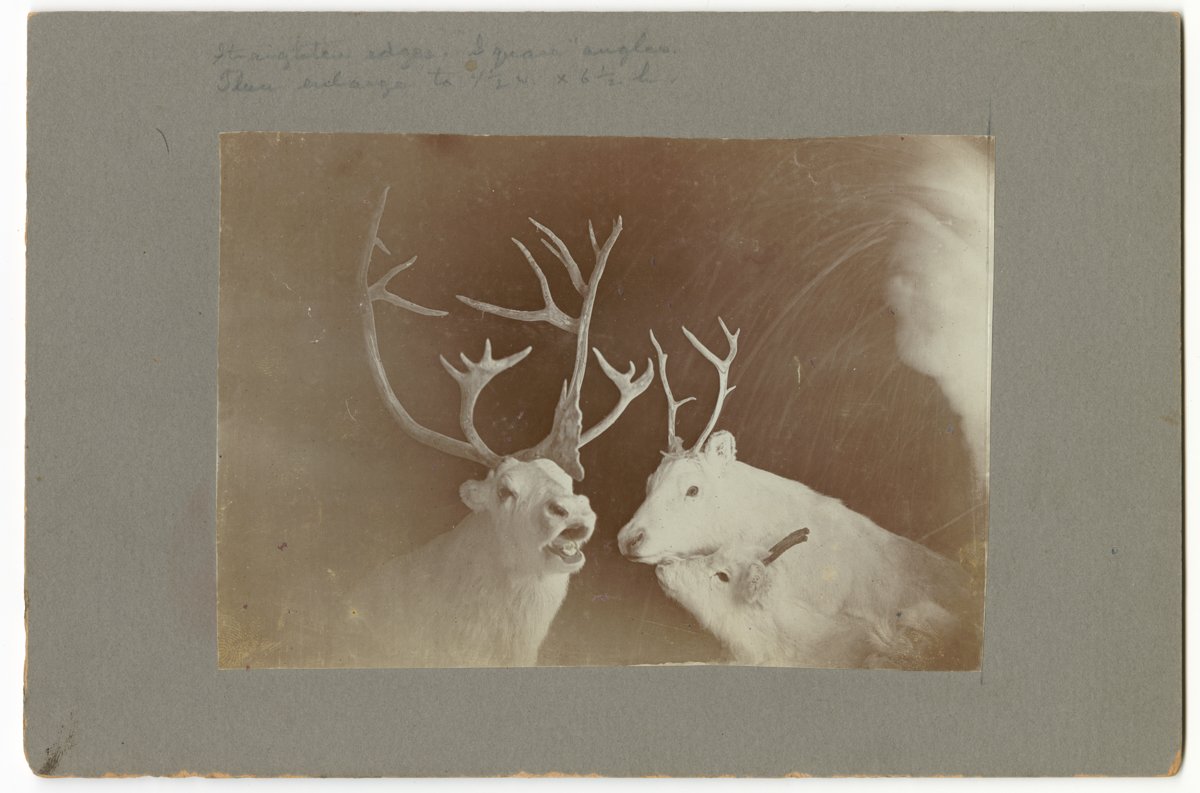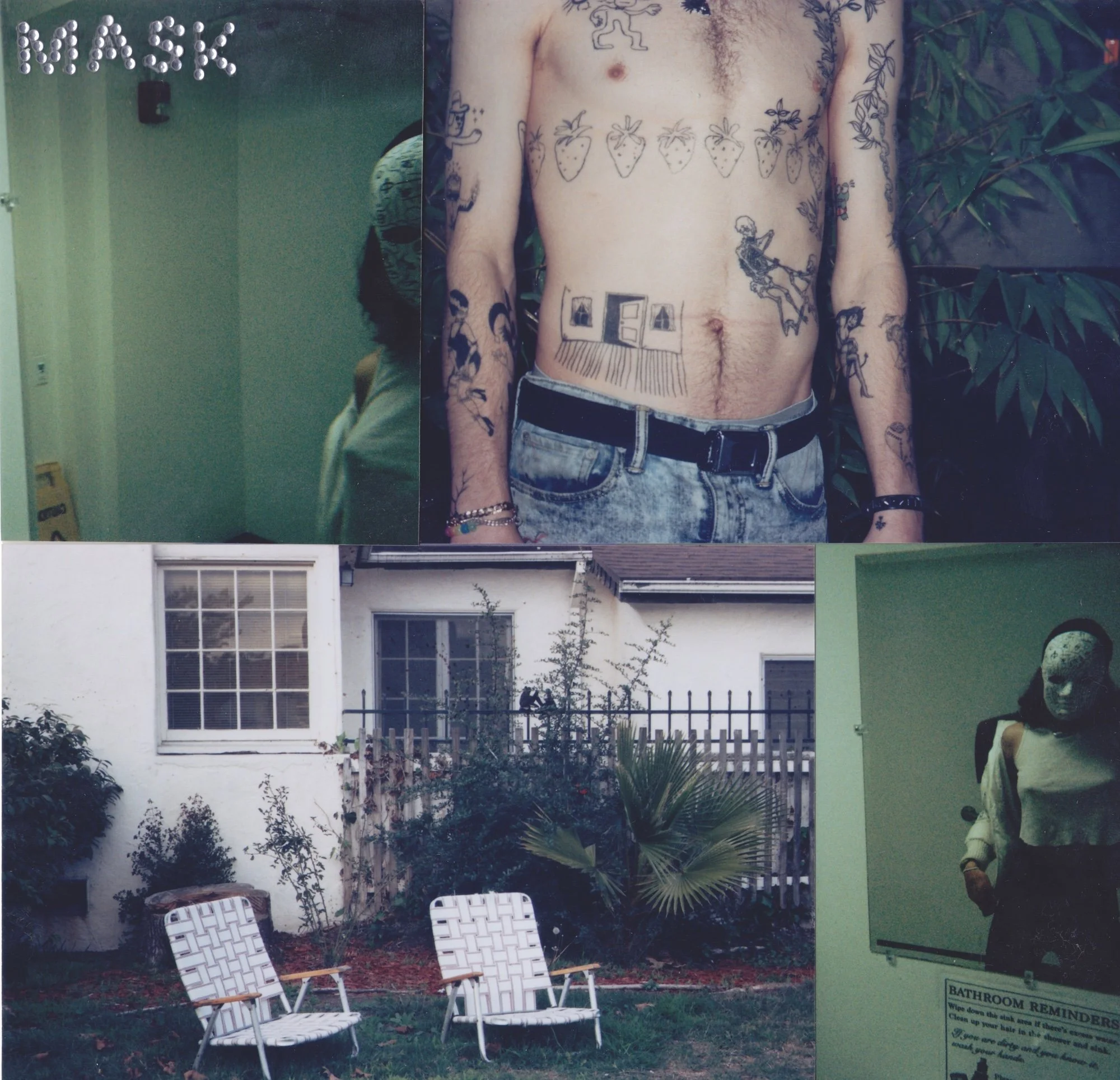Woman Crush Wednesday: Tatiana Lopez
Llushian. Cyanotype photography with intervened embroidery. © Tatiana Lopez
Interview by Yzabella Zari
Yzabella Zari: “In Between Dreams the Forest Echos the Song of the Burning Anaconda” Please say more about the process of how and why it represents the true spirit of the Indigenous Sapara women?
Tatiana Lopez: This series was the result of an ethnographic research that explored body-territory relations in connection to indigenous cosmologies. During my initial research I was able to interview the Sapara women we see in these portraits which was what guided the series. The process of creating the cyanotypes was very organic, I wanted the cyanotypes to represent the relationship between Sapara women and Mother Earth. During their interviews, they shared a lot about these connections and how for the Sapara it’s important to maintain a witsa ikichanu (good living). They explained how in order to maintain a witsa ikichanu it is important to protect the energies of the forest, river, and wind while also maintaining an open connection to the spirit world through dreams. In reality, this is such a simple concept but when we start to think about the dualities that separate humans from nature or spirit from body we start disconnecting ourselves from our spiritual foundation. For me, it was important to represent how intertwined Sapara women are with nature and just allow the cyanotypes to open conversations. I focused a lot on symbology, for example the cyanotypes were to be washed by the water and dried by wind, I collected natural leaves and feathers to embroider and create impressions onto the cyanotypes. This process is very meaningful to the concept of the work itself. Through embroidery I also wanted to follow a rhythm that would not only represent body - territory relations but, the Sapara’s connection to dreams and the women’s belief that everything in the forest is alive and has a spirit.
Ishawna. Cyanotype photography with intervened embroidery. © Tatiana Lopez
YZ: You have given the Sapara women a voice through videos accompanied by poetry. Do you feel connected to their words in any way?
TL: Yes absolutely, oral stories are connected to lived experiences. When it comes to Indigenous people’s oral traditions we can say they all are rooted in spirituality. It is Indiegenous people’s way of transmitting their wisdom to new generations. Listening to Sapara women sing their songs was also my inspiration that guided the photo-embroidery process. You know all these songs tell stories about their ancestors, nature, and community relations, and it’s such an integral part of their identity. So for me the red string was this representation of the ancestral lineage and how this lineage is passed from generation to generation.
YZ: What does storytelling mean to you?
TL: For me storytelling is the process of connecting and understanding the land that sustains us. It is just such a transformative and healing experience. It’s like a ritual, the story itself becomes an offering and the process of telling these stories is almost like a meditation. I believe storytelling has the power to literally change the way we see the world and the way we relate to our natural environments and the otherkin that surrounds us. A lot of my practice is influenced by collaborative and personal narratives so storytelling has really allowed me to explore the intersectionality between identity, environmental issues, and women’s rights. Storytelling for me becomes a co-creation that weaves, heals and connects. It’s like a map of self-discovering and I feel very lucky and grateful to be able to be a bridge to bring these stories to different audiences and share them with the communities I collaborate with.
Mukutsawa. Cyanotype photography with intervened embroidery. © Tatiana Lopez
YZ: How can we, as creatives, start conversations about making actual change for the people and the world?
TL: I think as creatives our role is to bring stories to life in the most honest and human way possible. Storytelling opens up an opportunity to reimage the world we live in and that itself creates conversations and enables change. Any form of art has the power to create change, but I think right now more than ever it is important to dismantle the system that constrains us and look beyond what it’s been taught to us throughout history.
YZ: Describe your creative process in one word.
TL: Meditation
Apamama Mukutsawa. Cyanotype photography with intervened embroidery. © Tatiana Lopez
YZ: If you could teach a one-hour class on anything, what would it be and why?
TL: I’ve been thinking a lot about this lately. I think it would be a class on collaborative processes of storytelling or using photo embroidery as a catalyst to recognize ourselves and explore deep emotions, memories, fears, and challenges as women. For me photo embroidery has become such a significant part of my practice that through the intervention of photography with embroidery, I am interested in the act of reconstructing new narratives through visual and collective memory. For example exploring our bodies as archives of experience becomes a healing process that reflects on what it means to reclaim power over our territory (body) as well as what it means to reactivate our bodies, emotions, and experiences while (re)creating a new narrative.
YZ: What was the last book you read or film you saw that inspired you?
TL: I've been reading and researching a lot about dreams, the last book that has inspired me is Man and His Symbols by Carl Jung. This was the last book undertaken by Jung before his death, it's a powerful one and it has been very interesting to approach the study of dreams from a psychological perspective as well as a spiritual one.
YZ: Who is your favorite woman artist?
TL: There are a lot of women artists who inspire me in many ways. A few of them are Cristina Mittermeier, Daniella Zalcman, Diana Markosian, Dani Khan Da Silva, Natalie Keyssar, Florence Goupil, Tamara Merino.
Yia. Cyanotype photography with intervened embroidery. © Tatiana Lopez
More of Tatiana Lopez’s work can be found on her website or Instagram.












